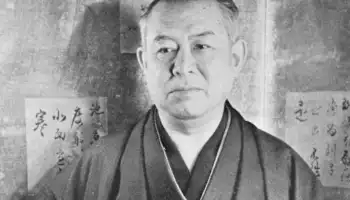Jun’ichirō Tanizaki stands as one of Japan’s most renowned and influential authors, known for his deep exploration of aesthetics, human relationships, and cultural tensions between tradition and modernity. His works often blur the boundaries between beauty and obsession, as well as between cultural identity and Western influences. Tanizaki’s writing reflects his fascination with the intersection of art, culture, and the human psyche, and how these elements shape the individual and society.
In this blog post, we will explore Tanizaki’s unique approach to aesthetics in Japanese fiction and how his works have influenced modern literature. We’ll delve into his major themes, his stylistic evolution, and how his stories continue to resonate with readers today.
1. Tanizaki’s Fascination with Beauty and Aesthetics
Tanizaki’s exploration of beauty and aesthetics is central to his literary identity. His novels often focus on how beauty is perceived, revered, and sometimes distorted by human desires and cultural values. In works such as In Praise of Shadows (1933), Tanizaki reflects on Japan’s traditional aesthetic values, contrasting them with the increasing influence of Western culture in the early 20th century. Through a meditation on shadow, light, and the senses, Tanizaki argues for an appreciation of subtlety, mystery, and the beauty found in imperfection—qualities often linked to Japanese culture and design.
Key Themes in Aesthetic Exploration:
- Shadows and Light: Tanizaki’s essay In Praise of Shadows remains one of his most iconic works, where he contrasts the Japanese reverence for dim, atmospheric lighting with the brighter, harsher artificial lighting of the West. He argues that the subtlety and shadowed beauty of traditional Japanese spaces enhance the emotional and spiritual experience of everyday life.
- The Erosion of Tradition: As Westernization crept into Japan in the early 20th century, Tanizaki saw a shift away from these traditional aesthetic values. His work often grapples with the tensions between preserving Japan’s cultural identity and the allure of modern, Western lifestyles.
2. Desire, Obsession, and the Complexity of Human Nature
In many of his works, Tanizaki explores the dark side of human nature—particularly the complexities of desire and obsession. His characters are often consumed by longing, whether for a person, a material object, or an idealized vision of beauty. In The Makioka Sisters (1943), Tanizaki paints a portrait of four sisters navigating their relationships, marriage prospects, and family dynamics amidst the backdrop of pre-World War II Japan. The novel, while not overtly obsessed with desire, subtly examines how the pursuit of personal and familial happiness can lead to tension, sacrifice, and self-delusion.

Similarly, in Naomi (1924), one of his more controversial works, Tanizaki delves deep into the obsessive and destructive nature of infatuation. The protagonist’s obsessive love for Naomi, a young woman who embodies both modernity and traditional beauty, demonstrates Tanizaki’s interest in the intersection between desire and power.
Key Themes in Desire and Obsession:
- Control and Submission: Tanizaki often explores the power dynamics in relationships, especially in terms of control, submission, and dependence. His characters often navigate these roles, and the stories serve as psychological explorations of the human capacity for dominance and submission.
- The Exotic and the Familiar: The characters in Tanizaki’s works often become fixated on the notion of the exotic or the unattainable, reflecting the tension between their cultural heritage and the allure of the unfamiliar.
3. Tanizaki’s Love for Traditional Japanese Culture
Tanizaki’s works are not only a celebration of the aesthetic, but also a reflection on Japan’s cultural history and traditions. His love for the old ways of Japan is evident in his recurring themes of traditional rituals, beauty, and the preservation of culture. While he critiques the Western influence on modern Japan, he also shows an underlying concern for the loss of cultural identity in a rapidly changing society.
Tanizaki’s affinity for Japanese culture extends to his personal life as well, where he sought to preserve the traditional aesthetics of his country. His writing, much like his life, was deeply tied to the exploration of what it meant to be Japanese in a time of cultural upheaval. He admired traditional arts, particularly those of the Japanese theater, ceramics, and architecture, and frequently referenced these in his stories.
Key Themes in Cultural Preservation:
- The Dangers of Modernity: In novels like The Makioka Sisters, Tanizaki critiques the influence of Western consumerism and modernization on traditional Japanese society, highlighting the tensions between progress and the preservation of traditional values.
- Homage to Art Forms: Tanizaki pays homage to traditional Japanese art forms, often weaving them into the fabric of his narrative, whether it’s through the appreciation of calligraphy, kabuki theater, or the ancient craft of tea ceremonies.
4. The Makioka Sisters: Tanizaki’s Masterpiece on Family and Tradition
Arguably Tanizaki’s most famous work, The Makioka Sisters, showcases his deep connection to Japan’s traditional culture while exploring the complex dynamics of family life. Set during the years before World War II, the novel paints a portrait of a once-prosperous family in decline, as they struggle with the passing of old traditions and the rise of new values. Through the story of the Makioka sisters and their familial relationships, Tanizaki examines the tensions between duty and desire, tradition and change.
The novel’s depiction of the family’s intricate rituals, including the pursuit of suitable marriages for the sisters, offers a rich meditation on Japanese culture, class, and the constraints of societal expectations.
5. Conclusion: Tanizaki’s Lasting Legacy
Jun’ichirō Tanizaki’s exploration of beauty, obsession, and the complexities of human relationships continues to resonate with readers around the world. His unique ability to weave together aesthetics with psychological depth makes his work stand out in the world of Japanese literature. Whether exploring the shadows of traditional culture or the human desire for control, Tanizaki’s novels provide a window into the heart of Japan’s evolving identity, a theme that continues to captivate readers and inspire writers today.
Through his meticulous exploration of the relationship between tradition and modernity, beauty and obsession, Tanizaki has cemented himself as one of the key figures in Japanese fiction. His influence on both Japanese and global literature remains profound, and his works continue to be celebrated for their rich aesthetic and intellectual depth.










